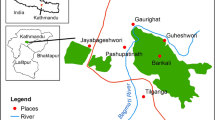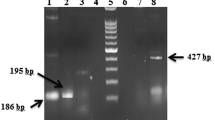Abstract
We used the polymerase chain reaction (PCR) to determine the prevalence of Entamoeba histolytica and E. dispar in the wild population of macaque monkeys (Macaca fuscata) in Mt. Takasaki, Oita Prefecture, Japan. Of the 101 samples collected, 41 (42.57%) were found to be positive for E. dispar. However, no E. histolytica was detected from the collected samples. The results of this survey demonstrate the high prevalence of E. dispar in macaque monkeys in the study area. Moreover, they provide additional baseline information on naturally acquired infectious agents of macaque monkeys and offer an accurate tool for detection of E. histolytica and E. dispar, which are needed for biomedical research using nonhuman primate models.
Similar content being viewed by others
Author information
Authors and Affiliations
Additional information
Received: 25 September 1998 / Accepted: 15 December 1998
Rights and permissions
About this article
Cite this article
Rivera, W., Kanbara, H. Detection of Entamoeba dispar DNA in macaque feces by polymerase chain reaction. Parasitol Res 85, 493–495 (1999). https://doi.org/10.1007/s004360050583
Issue Date:
DOI: https://doi.org/10.1007/s004360050583




